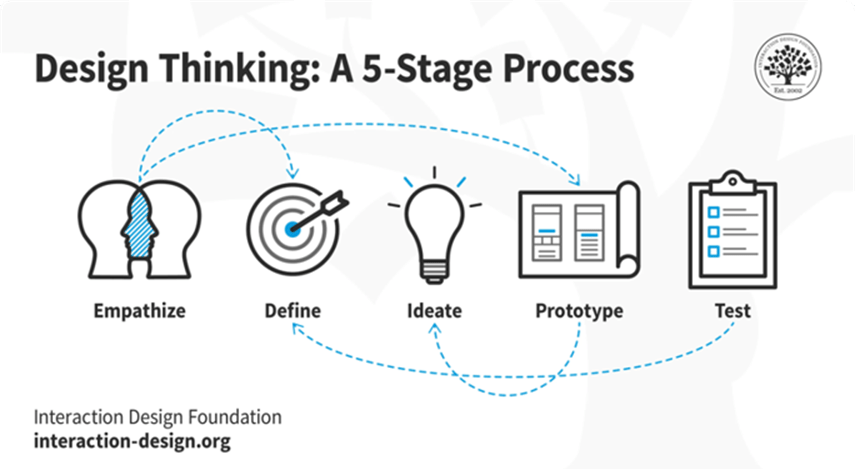Use an empathy-driven, iterative design approach for learning experience design

Challenge
Designing learning experiences is a collective effort between learning experience (LX) designers and stakeholders, including subject matter experts (SMEs) and business partners. LX designers serve as project leads and learner advocates, but it can be challenging to create a solution that supports the learner while balancing business goals and stakeholder needs. It’s easy to get caught up in the development part of the design process, or not dig deep enough into stakeholder needs to correctly define the problem. Without continual feedback to refine and correct our assumptions, we run the risk of designing a solution that doesn’t truly align with learner or stakeholder needs.

Solution
Using a design thinking process offers a way to ground our work in empathy in order to better define the design problem, and follow a non-linear framework for ideation, prototyping, and testing that is rapid and flexible.

© Interaction Design Foundation, CC BY-SA 3.0
Curious about working this way? Here are some tips and tools:
- Start with empathy: LX designers are learner advocates. What do we know about the learner context and learner needs, and how can we balance the needs of all stakeholders, including business goals, during the design process? Our team uses empathy maps to build empathy that generates new perspectives.
- Use the power of convergent and divergent thinking: A design thinking process allows both convergent and divergent thinking, which increases creativity and is results-oriented.
- Create a learner-centered problem statement and build a compelling “How might we?”: The problem statement and “how might we?” are touchpoints we come to again and again as we ideate, prototype, and test. These ground our creative work and center it on actionable results.
- Be human-centered and keep learning: Using an empathetic, flexible, and iterative approach means we are continually challenging our assumptions and aligning our goals with the learner.
Resources
What is design thinking?
https://www.interaction-design.org/literature/topics/design-thinking
Creating problem statements
https://www.interaction-design.org/literature/topics/problem-statements